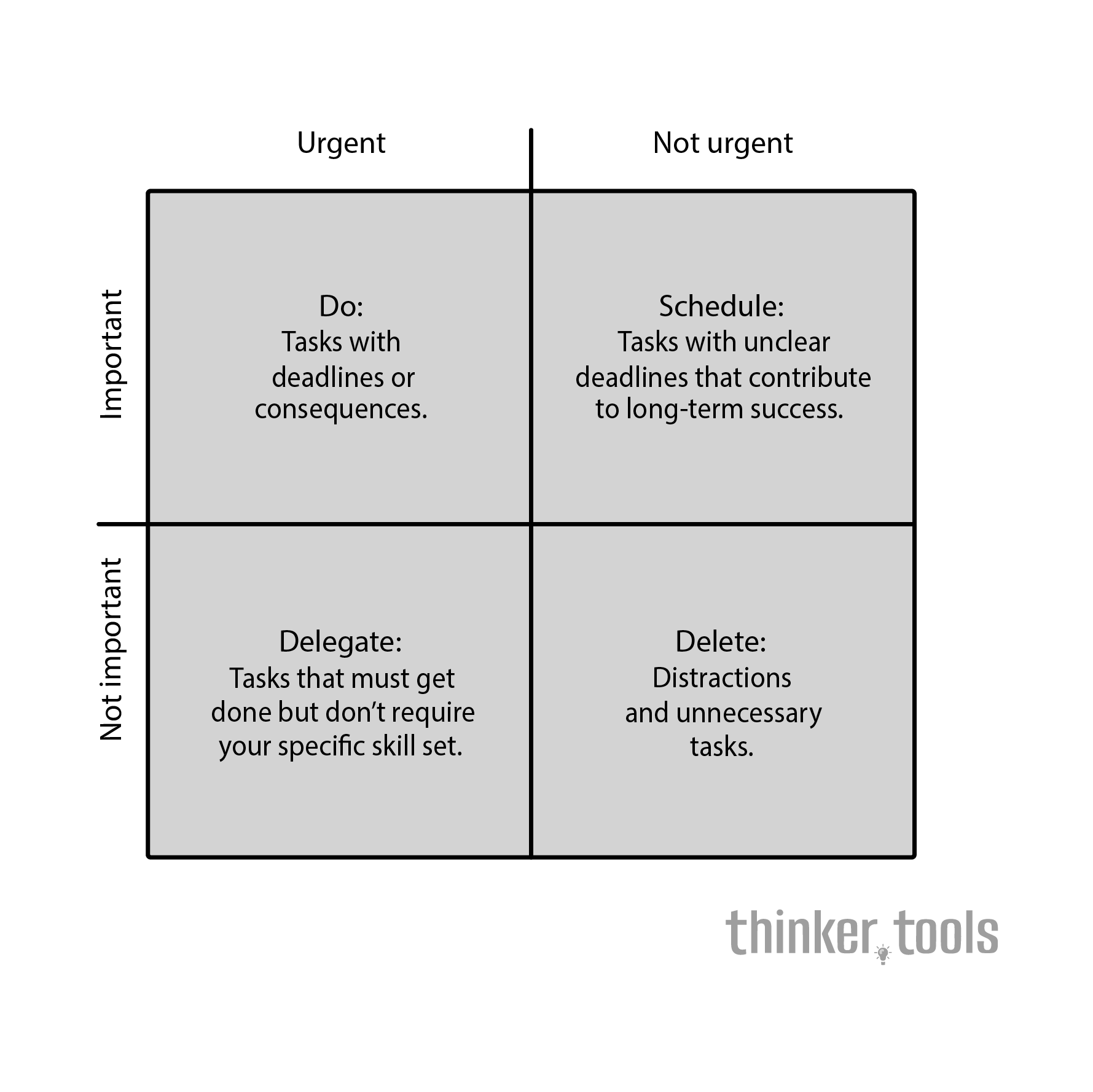
What is the Eisenhower Matrix?
The Eisenhower Matrix is a prioritization framework that categorizes tasks based on two criteria: urgency and importance. By plotting tasks on a 2x2 grid, it creates four quadrants that guide different actions: Do, Schedule, Delegate, and Delete. This visual approach transforms an overwhelming task list into a strategic action plan, helping you focus on activities that truly move you toward your goals.
The History Behind the Matrix
This framework is attributed to Dwight D. Eisenhower, the 34th President of the United States and former Supreme Commander of Allied Forces in Europe. Eisenhower was renowned for his incredible productivity and ability to sustain focus on important matters despite constant urgent demands. He reportedly said, "What is important is seldom urgent, and what is urgent is seldom important." Stephen Covey later popularized this concept in "The 7 Habits of Highly Effective People," cementing its place in productivity literature.
How to Use the Eisenhower Matrix Step by Step
1. Set Up Your Matrix
Draw a square divided into four quadrants:
- Quadrant 1 (Top Left): Urgent and Important - DO
- Quadrant 2 (Top Right): Not Urgent but Important - SCHEDULE
- Quadrant 3 (Bottom Left): Urgent but Not Important - DELEGATE
- Quadrant 4 (Bottom Right): Not Urgent and Not Important - DELETE
2. Define Urgent vs. Important
- Urgent: Requires immediate attention, has deadlines, consequences for delay
- Important: Contributes to long-term goals, values, and mission
3. List All Your Tasks
Create a comprehensive list of everything on your plate, from major projects to minor to-dos.
4. Categorize Each Task
For each item, ask:
- Is this urgent? (Does it need immediate attention?)
- Is this important? (Does it align with my goals and values?)
Place each task in the appropriate quadrant based on your answers.
5. Take Action by Quadrant
Quadrant 1 - DO (Crisis Management)
- Handle these tasks immediately
- Examples: Medical emergencies, critical deadlines, urgent client issues
- Goal: Complete quickly but work to prevent future crises
Quadrant 2 - SCHEDULE (Growth and Prevention)
- Block time for these activities
- Examples: Strategic planning, relationship building, personal development, exercise
- Goal: Spend most of your time here for maximum life impact
Quadrant 3 - DELEGATE (Interruptions)
- Find others who can handle these tasks
- Examples: Some meetings, certain emails, routine requests
- Goal: Minimize time spent here through systems and delegation
Quadrant 4 - DELETE (Time Wasters)
- Eliminate or strictly limit these activities
- Examples: Excessive social media, mindless browsing, unproductive meetings
- Goal: Consciously choose when to engage in these for relaxation only
Practical Examples
Executive's Daily Planning:
- Q1: Board presentation due tomorrow, system outage affecting customers
- Q2: Strategic planning session, mentoring junior staff, industry research
- Q3: Routine status meetings, responding to non-critical emails
- Q4: Reading office gossip emails, attending optional social events
Result: She blocks 3 hours for Q2 activities, delegates two Q3 meetings, and skips the optional events.
Student's Semester Management:
- Q1: Tomorrow's exam, paper due tonight
- Q2: Thesis research, building study habits, networking with professors
- Q3: Responding to club emails, attending every study group
- Q4: Binge-watching shows, scrolling social media
Result: After handling Q1 items, he schedules daily thesis time and limits social media to 30 minutes daily.
Advanced Strategies
The 60-20-20 Rule: Aim to spend 60% of your time in Q2, 20% in Q1, 20% in Q3, and minimal time in Q4.
Weekly Review: Every week, analyze where you spent your time and adjust to increase Q2 activities.
Preventive Focus: Many Q1 crises result from neglecting Q2. Regular Q2 investment reduces future emergencies.
Benefits and Life Impact
The Eisenhower Matrix revolutionizes how you approach daily life by:
- Reducing stress through clear prioritization and action plans
- Increasing effectiveness by focusing on high-impact activities
- Preventing burnout by identifying and eliminating time wasters
- Improving work-life balance by ensuring important personal activities get scheduled
- Building proactive habits instead of constantly reacting to urgencies
- Creating space for growth by protecting time for important but not urgent activities
The matrix's true power lies not in perfect categorization but in developing the habit of questioning every task's urgency and importance. Over time, you'll find yourself naturally gravitating toward Quadrant 2, where real progress happens. You'll spend less time fighting fires and more time preventing them, less time on busywork and more time on meaningful work. By mastering this simple four-square grid, you master the art of living intentionally rather than reactively.